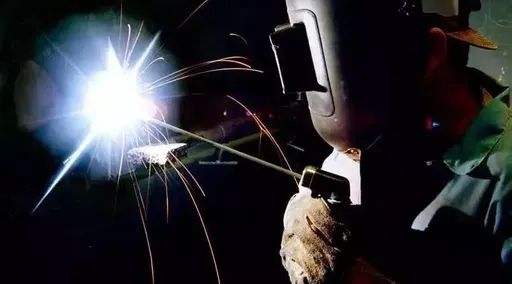Non-destructive testing is to use the characteristics of sound, light, magnetism and electricity to detect whether there is a defect or inhomogeneity in the object to be inspected without damaging or affecting the performance of the object to be inspected, and to give the size, position, and location of the defect. The general term for all technical means to determine the technical state of the inspected object (such as whether it is qualified or not, remaining life, etc.)
Commonly used non-destructive testing methods: ultrasonic testing (UT), magnetic particle testing (MT), liquid penetrant testing (PT) and X-ray testing (RT).

Ultrasonic testing
UT (Ultrasonic Testing) is one of the industrial non-destructive testing methods. When an ultrasonic wave enters an object and encounters a defect, part of the sound wave will be reflected, and the transmitter and receiver can analyze the reflected wave, and the defect can be detected extremely accurately. And it can display the position and size of internal defects, measure material thickness, etc.
Advantages of ultrasonic testing:
1. Large penetration ability, for example, the effective detection depth in steel can reach more than 1 meter;
2. For planar defects such as cracks, interlayers, etc., the detection sensitivity is high, and the depth and relative size of defects can be measured;
3. The equipment is portable, the operation is safe, and it is easy to realize automatic inspection.
shortcoming:
It is not easy to inspect workpieces with complex shapes, and the surface to be inspected is required to have a certain degree of smoothness, and the gap between the probe and the surface to be inspected must be filled with couplant to ensure sufficient acoustic coupling.
Magnetic Particle Testing
First of all, let’s understand the principle of magnetic particle testing. After the ferromagnetic material and the workpiece are magnetized, due to the existence of discontinuity, the magnetic field lines on the surface and near the surface of the workpiece are locally distorted, resulting in a leakage magnetic field, which absorbs the magnetic powder applied on the surface of the workpiece, and forms a visible magnetic field under suitable light. traces, thereby showing the location, shape and size of the discontinuity.
The applicability and limitations of magnetic particle testing are:
1. Magnetic particle inspection is suitable for detecting discontinuities that are small in size on the surface and near the surface of ferromagnetic materials, and the gap is extremely narrow and difficult to see visually.
2. Magnetic particle inspection can detect parts in various situations, and can also detect various types of parts.
3. Defects such as cracks, inclusions, hairlines, white spots, folds, cold shuts and looseness can be found.
4. Magnetic particle testing cannot detect austenitic stainless steel materials and welds welded with austenitic stainless steel electrodes, nor can it detect non-magnetic materials such as copper, aluminum, magnesium and titanium. It is difficult to find delaminations and folds with shallow scratches on the surface, buried deep holes, and angles less than 20° with the workpiece surface.
Xinfa welding has excellent quality and strong durability, for details, please check: https://www.xinfatools.com/welding-cutting/
liquid penetrant testing
The basic principle of liquid penetrant testing is that after the surface of the part is coated with fluorescent dyes or colored dyes, the penetrant can penetrate into the surface opening defects under capillary action for a period of time; after removing the excess penetrant on the surface of the part, the A developer is applied to the surface of the part.
Similarly, under the action of the capillary, the imaging agent will attract the penetrating fluid retained in the defect, and the penetrating fluid seeps back into the imaging agent, and under a certain light source (ultraviolet light or white light), the trace of the penetrating fluid at the defect is displayed , (yellow-green fluorescence or bright red), so as to detect the morphology and distribution of defects.
The advantages of penetration testing are:
1. It can detect various materials;
2. High sensitivity;
3. Intuitive display, convenient operation and low detection cost.
The disadvantages of penetration testing are:
1. It is not suitable for inspecting workpieces made of porous loose materials and workpieces with rough surfaces;
2. Penetration testing can only detect the surface distribution of defects, and it is difficult to determine the actual depth of defects, so it is difficult to make quantitative evaluation of defects. The detection result is also greatly influenced by the operator.
X-ray inspection
The last one, ray detection, is because X-rays will be lost after passing through the irradiated object, and different materials with different thicknesses have different absorption rates for them, and the negative film is placed on the other side of the irradiated object, which will be different due to the different ray intensities. The corresponding graphics are generated, and the reviewers can judge whether there is a defect inside the object and the nature of the defect according to the image.
Applicability and limitations of radiographic testing:
1. It is more sensitive to the detection of volume-type defects, and it is easier to characterize the defects.
2. Radiographic negatives are easy to keep and have traceability.
3. Visually display the shape and type of defects.
4. The disadvantage is that the buried depth of the defect cannot be located. At the same time, the detection thickness is limited. The negative film needs to be washed specially, and it is harmful to the human body, and the cost is high.
All in all, ultrasonic and X-ray flaw detection are suitable for detecting internal defects; among them, ultrasonic is suitable for parts with a regular shape of more than 5mm, and X-rays cannot locate the burial depth of defects and have radiation. Magnetic particle and penetrant testing are suitable for detecting surface defects of components; among them, magnetic particle testing is limited to detecting magnetic materials, and penetrant testing is limited to detecting surface opening defects.
Post time: Jun-21-2023



